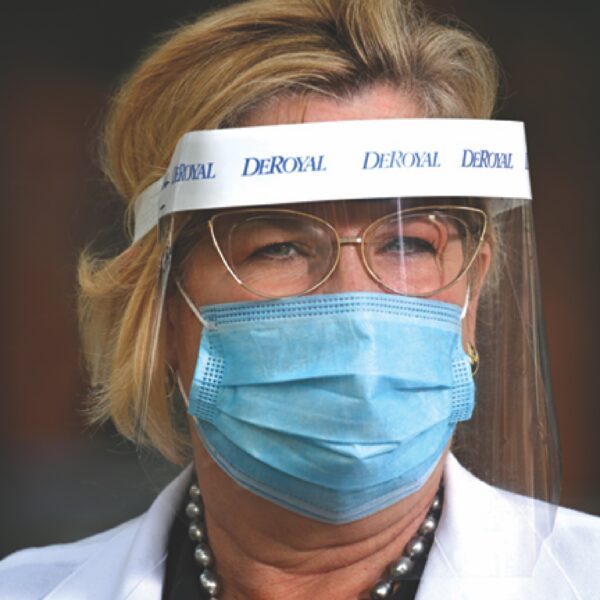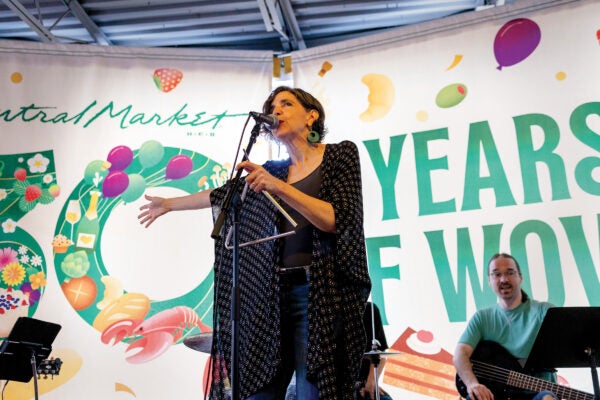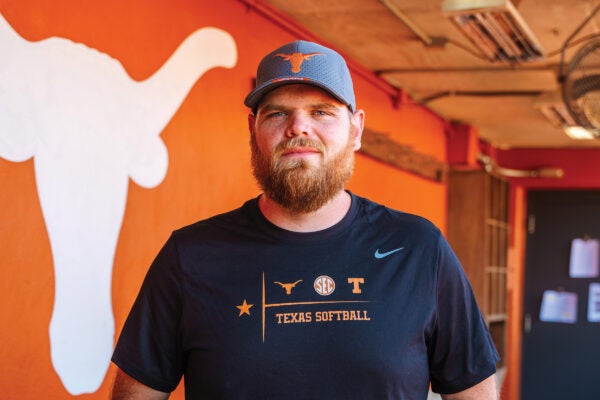It was nearly 9 a.m. on Dec. 14, in an industrial looking room of stone walls and stainless steel that was as crowded with news cameras and broadcast reporters as social distancing etiquette would permit. As Jennifer Harrison lifted a surprisingly small box containing 195 vials — approximately 1,200 doses — of the new, and very cold, Pfizer-BioNTech COVID-19 vaccine, she was mentally processing a lot of information.
Top of mind for Harrison, a career nurse and senior director of clinical operations at UT Health Austin and the Dell Medical School, was the protocol for receiving and storing the anxiously anticipated clear liquid, which she had been reviewing on Zoom calls with various medical and regulatory authorities for over a week. A man from the Centers for Disease Control and Prevention, who was present because this was one of the first shipments of vaccine to be delivered in Texas, had just finished taking photos to document that the specially designed containers packed in dry ice had arrived undamaged. He had also checked that the sophisticated digital temperature sensors that were transmitting data back to the manufacturer confirmed that the box’s contents had never warmed above the required minus 94 degrees Fahrenheit.
The medical-research-grade deep freezers into which Harrison, her hands protected by a double set of dark purple gloves, placed the boxes were just one of the reasons UT Health Austin had been selected by the state as a vaccine distribution center for front-line health care workers. As she closed the freezer door, took a deep, steadying breath and turned to face the cameras as an impromptu spokesperson, she understood that, like the unbroken chain of technology and logistics that preserved the vaccine by keeping the vials almost unimaginably cold, The University of Texas at Austin was an essential part of the chain of events that would ultimately lead to a promised end to a global pandemic of historic proportion.
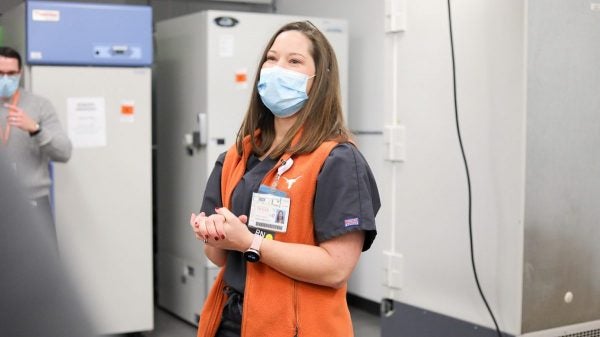
Coming together while apart
“I remember that weekend,” says Dr. Amy Young, chief clinical officer at UT Health Austin. “It was like the moon landing, or when those Chilean miners were rescued after being trapped underground in 2010. I watched as trucks pulled away from loading docks carrying the first shipments of COVID-19 vaccine, and I thought, ‘We’re all watching this together; people all over the country are sharing this event.’ It was that important. And, for me, what made it even more exciting was knowing that one of those trucks was heading straight to Austin.”
Young, a board-certified gynecologist in UT Health Austin’s Women’s Health Institute and Dell Medical School’s vice dean of professional practice, has a direct connection to our region’s medical response to COVID-19. It was Young, along with Harrison, who on March 13, 2020, performed the drive-thru test that identified the first verified case of the disease in Austin.
But that moment was only one in which experts from the Dell Medical School; its clinical practice, UT Health Austin; and The University of Texas at Austin worked with officials and decision-makers in state and local government, Central Health, Austin Public Health, and other organizations to devise a strategy to keep our community as safe as possible in a situation defined by rapidly changing, and often contradictory, information.
As the city temporarily closed bars and restaurants, introducing the now familiar cycles of social distancing, working from home and minimizing personal contact, UT Health Austin pivoted, where appropriate, to a safer, distance-based care model that relied on telehealth systems that were devised and implemented with remarkable speed.
Medical students volunteered to conduct contact tracing that, along with mathematical models created by the UT Austin COVID-19 Modeling Consortium, tracked the spread of the virus. Soon, these contact tracing efforts would expand to include others in the school who could contribute their time and even to people in the community who wanted to volunteer.
And nurses, nursing students, pharmacists, social workers and information technology professionals from all across campus came together to screen patients entering the clinics, to care for the emotional needs of clinicians working long and stressful hours, and to coordinate various services, from testing people experiencing homelessness to relaying reliable information in multiple languages to all parts of our city.
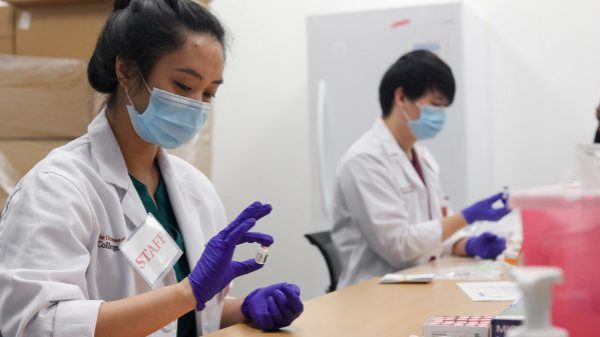
Those very cold boxes
The reason the Pfizer vaccine needs to be frozen at such a low temperature is that unlike previous vaccines, which traditionally introduce weakened strains of a live virus against which the immune system can build antibodies, the new COVID-19 vaccine is mRNA-based. It contains a piece of what is called messenger RNA, a kind of blueprint your body uses to make antibodies against a very specific protein found inside the novel coronavirus that causes COVID-19. As this tiny piece of mRNA is so remarkably fragile, frigid temperatures are needed to keep it intact during shipment and preparation. And while it has been suggested that these new vaccines were created with remarkable speed, the truth is that much of the research around the proteins the vaccine uses to trigger your body’s defensive response had been going on for years — right here at UT Austin.
“It was the groundbreaking work of Jason McLellan,” Young says, “his colleagues at the National Institutes of Health and, of course, his students, who created the first 3D map of this coronavirus’s spike proteins. That work substantially contributed to the efforts that resulted in the vaccines that are being prepared by pharmacists and pharmacy students in Gregory Gym on the UT Austin campus right now as we work to deliver vaccine to our community.
“We have been testing for this virus from very early on, tracking its spread and safely treating our community for all their health care needs while the virus was active around us. We worked with our partners in University Health Services to ensure that our students could safely continue their education. Our researchers studied the virus, making discoveries that are making a difference, here and around the world. And, based on our work, we were selected as a state-authorized vaccination hub. It has been a very eventful year, but ….”
Pausing, Young looks down at the two masks she is about to put on before she sees her next patient in the clinic.
“We aren’t done,” she adds. “Mass vaccination is important, but there are mutations and variations occurring that we need to identify and understand. And that’s exactly what our scientists and clinicians are working together to do. We have virologists and geneticists studying the virus, and computer models analyzing the best ways to constrain its spread. We are going to prevail; we will come out on the other side of this remarkable event.”
Lazuta is the executive director of Health Enterprise Strategy Translation for UT Health Austin.
